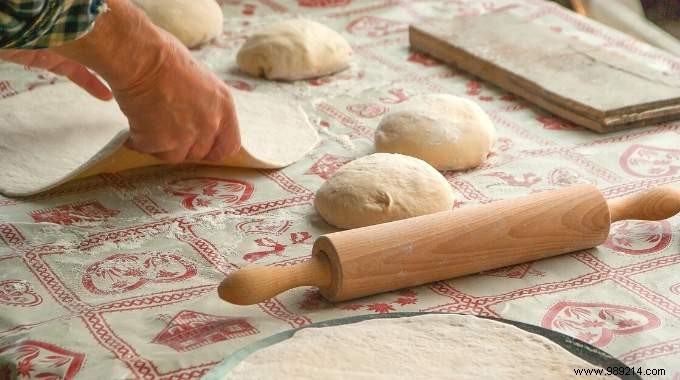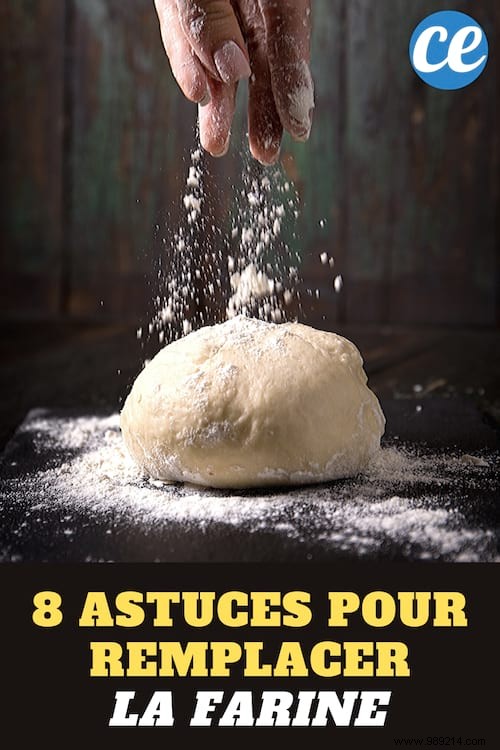
With confinement, the "wheat flour" shelves are robbed!
Too bad, for once we have time to make good recipes...
...or even bake your own bread at home.
Fortunately, there are easy and effective tips to replace flour in all your recipes.
Also know that expired flour has many uses, so don't throw it away!
Here are 8 ingredients to cleverly replace wheat flour in your favorite sweet and savory recipes . Watch:

Potato or corn starch ("Maïzena") is "the" product to absolutely have in your cupboard.
In addition to not containing gluten and being inexpensive, starch allows you to prepare lighter and fluffier recipes.
The right dosage: 100 g of starch =100 g of wheat flour.
Whether ground almonds, hazelnuts or even walnuts, it is the gourmet substitute for wheat flour, especially in baking.
Not only will this bring more flavor and finesse to your recipe...
But in addition the result is deliciously soft!
For a perfect cooking hold, the ideal is to mix the powder of your choice with the same quantity of starch.
The right dosage: 50 g ground almonds + 50 g cornstarch =100 g wheat flour.
Cornmeal is a great alternative to wheat flour for savory gluten-free recipes. To top it off, it brings a nutty taste to your dish and is very inexpensive.
The right dosage: 100 g cornmeal =100 g wheat flour.
While oat flakes are the most common, you can also sometimes find quinoa or millet flakes, especially in organic grocery stores.
For them to replace wheat flour cleverly, you just need to mix them well and then incorporate them into your sweet or savory preparation.
Mixed with cornstarch, they will bring lightness and fluffiness, especially to your homemade cakes.
The right dosage: 50g rolled oats + 50g cornstarch =100g wheat flour.
In both savory and sweet recipes, the potato is the perfect ally to do without wheat flour.
And to top it all off, it's very economical and easily found in any store.
Here's how to do it:peel them and wash them thoroughly in cold water. Then, cook them in a large volume of boiling water.
As soon as your knife sinks easily into the flesh, drain them. Then use a potato masher or a fork to mash them, like making a puree.
Once completely cooled, you can use this purée to replace wheat flour in your recipe!
The right dosage: 100 g of mashed potatoes =100 g of wheat flour.
Millet, quinoa or buckwheat... We know their many benefits for our body:rich in amino acids, mineral salts and fibre. The bonus is that these cereals can also do us great service when wheat flour is lacking! In both savory and sweet recipes, simply replace the wheat flour in equal quantities with the cereal of your choice.
The right dosage: 100 g of cereals (e.g. quinoa) =100 g of wheat flour.
As with potatoes, mashed legumes are a great alternative to wheat flour. Lentils, white or red beans, chickpeas... Make your choice, then cook them for a long time in water if the legumes are not already cooked in cans or jars. Then, just mix them well and incorporate them into your savory or sweet preparation. In addition to being very good for your health, mashed legumes give more lightness and softness to your recipes.
The right dosage: 100 g of puree =100 g of wheat flour.
They are so numerous that it is difficult to name them all!
Chickpeas, quinoa, cassava, buckwheat, rye, small or large spelt, rice, chestnuts, coconut... There's something for everyone.
Note that some of these alternative flours are gluten-free (cassava, quinoa, chestnut, rice, buckwheat, corn, etc.).
And they sometimes have very pronounced aromas. They can therefore change the final flavor and texture of your recipe. To remedy this, do not hesitate to mix 2 or 3 different ones.
The right dosage: 50 g of "strong" flavored flour (eg:chestnut flour) + 50 g of "neutral" flavored flour (eg:rice flour) =100 g of wheat flour.